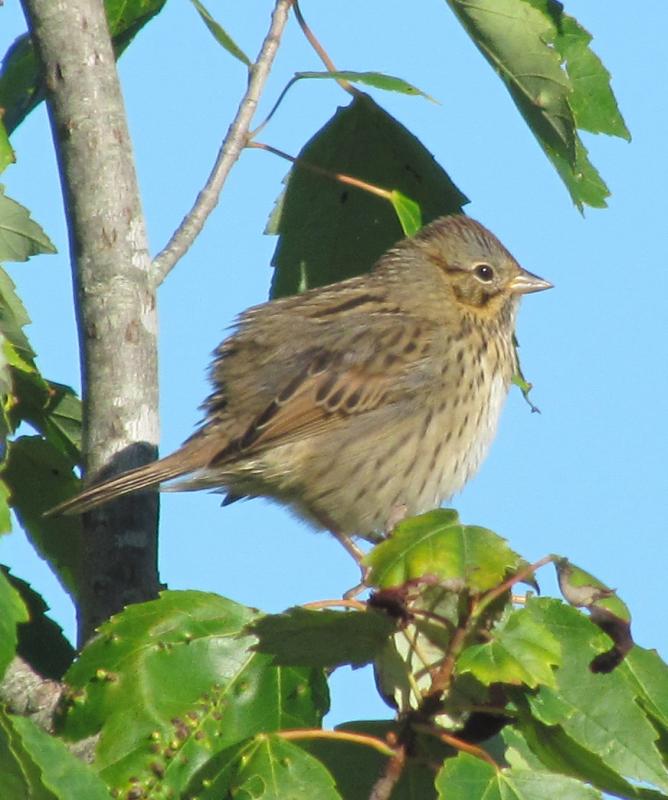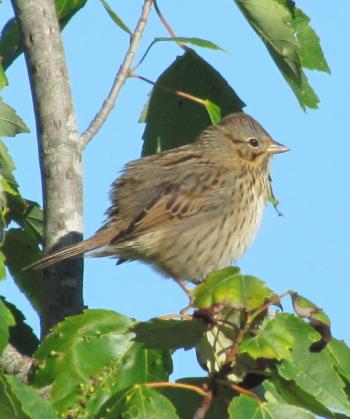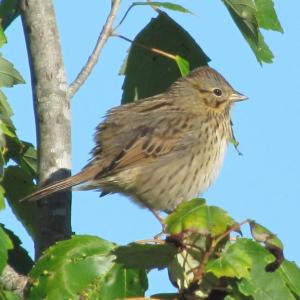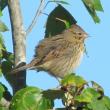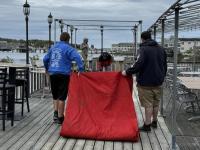Lincoln’s Sparrow and Maine’s John James Audubon Connection
One of our favorite sparrows has always been the Lincoln’s sparrow. Back in September, we saw a few as they passed through on migration heading toward the southern U.S. and Mexico where they winter after passing the summer across Canada and northern Maine. Like most sparrows, you need a close look in order to fully appreciate its understated beauty.
The Lincoln’s sparrow is, to our eyes, quite striking. It has an unusual pinkish-buffy tone to its upper breast and the sides of its throat, which contrast with its gray face. Its breast streaks are not broad and blurry like most sparrows but instead are sharp and fine. The Lincoln’s sparrow’s song is different and striking as well, sounding more like a finch, with warbling, complex overtones rather than the simple whistles of, say, the more familiar song sparrow. It’s no wonder John James Audubon himself was rather enamored of the species when he first discovered it at Natashquan, in what is now the North Shore of Quebec, in 1833. In his account that accompanied his painting of the species, Audubon described how the bird was a better songster even than any American finches that he knew. He noted how the song reminded him of a mix of the songs of several European species.
By now some of you may have had the same question that we did about Lincoln’s sparrow: who indeed is it named after? History buffs will recognize that Abraham Lincoln was not a name that would have been a contender as the source, since the bird was named in the 1830s, when Abe Lincoln was an unknown young man in his twenties. But some fans of history might also know of a man named Benjamin Lincoln, a Revolutionary War general who received land in Maine for his service in the war. One of his sons settled way Downeast, in Dennysville, in what is now Washington County. His son, Tom Lincoln, was invited to join Audubon (who had suffered a stroke a few months before) and one of Audubon’s son and some other young men on Audubon’s expedition to Labrador in 1833. They hired a boat and crew and left from Eastport on June 6, 1833.
On July 4 they were exploring around Natashquan (a native Innu name that means something like “place to hunt bears”) when Audubon heard the song of the bird and immediately knew it was a species he’d never seen or heard. He called the young men over immediately to try to capture a specimen (remember they didn’t have fancy binoculars to view them!)—and it was Maine’s own young Tom Lincoln who procured the first specimen. Audubon was ecstatic and went back to the ship immediately to paint the bird. He initially named it “Tom’s finch” and later, more formally, Lincoln’s finch (Fringilla lincolni). Although later ornithologists classified the species as a sparrow, the Lincoln part stuck and it’s now officially known as Lincoln’s sparrow (Melospiza lincolnii).
Interestingly, Audubon was also quite proud to have included in his illustration of “Lincoln’s finch” three northern plant species that had apparently never been illustrated before. He notes that one of them, the cloudberry, was fed upon by what he describes as clouds of “Esquimaux curlew”—the now-extinct species that is officially the Eskimo curlew today. Another telling aspect of Audubon’s illustration of Lincoln’s finch is that he shows the underground soil layer on which the sparrow is perched as if to give a sense to the reader of the deep bog deposits that are characteristic breeding habitat for the species.
So there you have it, a Maine history, biography, and ornithology lesson all rolled into one!
Jeffrey V. Wells, Ph.D., is a Fellow of the Cornell Lab of Ornithology. Dr. Wells is one of the nation's leading bird experts and conservation biologists and author of the Birder’s Conservation Handbook. His grandfather, the late John Chase, was a columnist for the Boothbay Register for many years. Allison Childs Wells, formerly of the Cornell Lab of Ornithology, is a senior director at the Natural Resources Council of Maine, a nonprofit membership organization. Both are widely published natural history writers and are the authors of the book, Maine’s Favorite Birds.
Event Date
Address
United States

